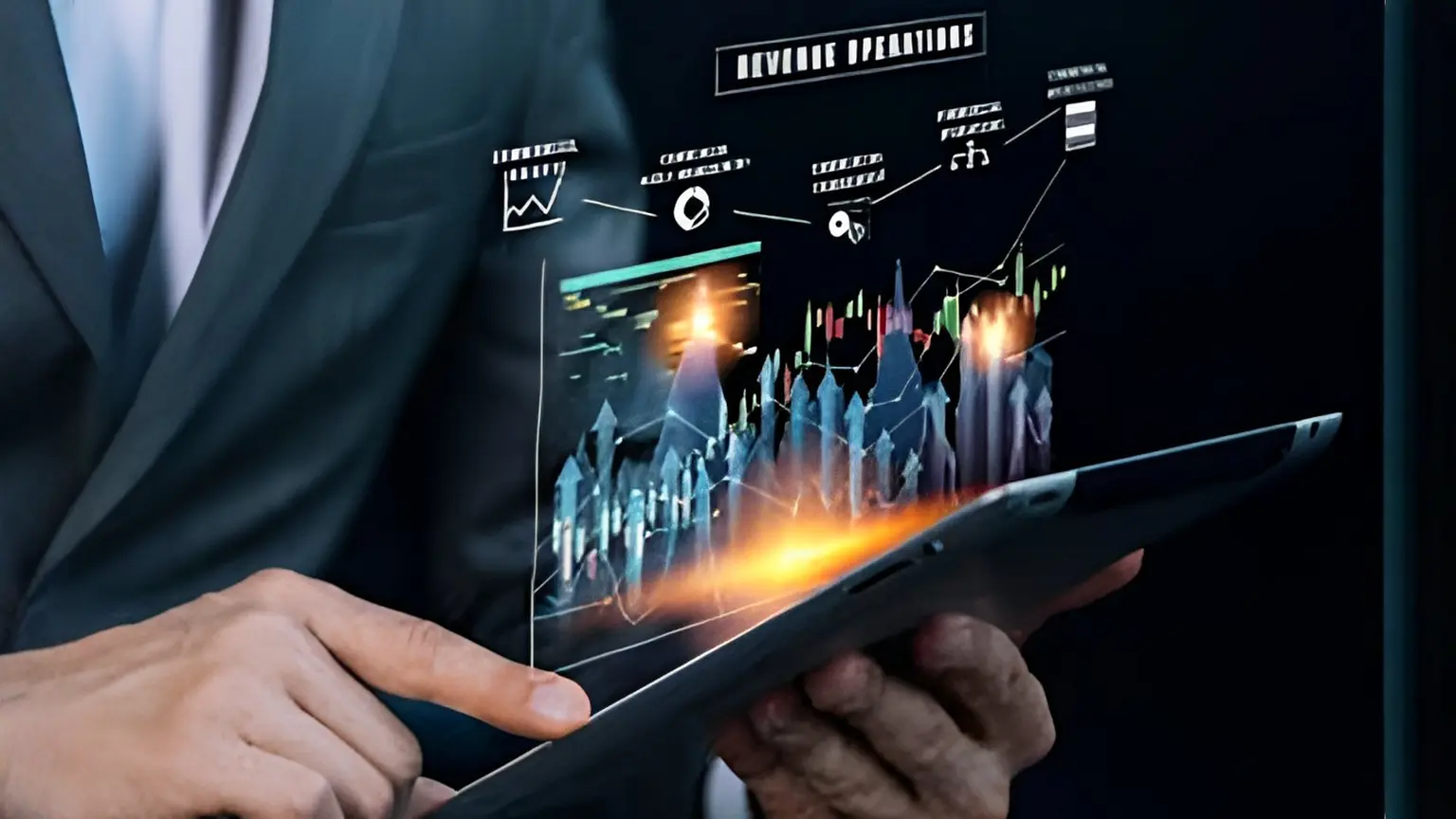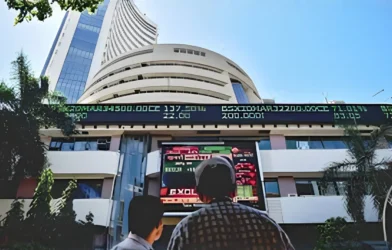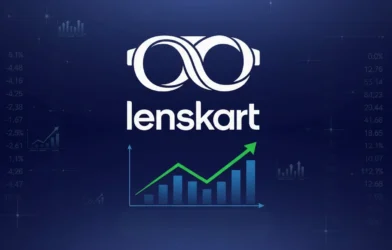Author: Rashi Pareek | EQMint | Opinion article
In an age defined by speed and data, algorithmic trading (algo trading) has emerged as a transformative force in global financial markets. What was once the exclusive domain of hedge funds, institutional investors, and high-frequency trading firms is now becoming accessible to individual retail traders.
Thanks to technological advancements, API integrations, and affordable automation platforms, even small investors can now build, test, and deploy trading algorithms that operate at lightning speed — free from the emotional biases and limitations of human decision-making.
In simple terms, algo trading refers to using computer-coded instructions to execute trades automatically based on predefined conditions like price, volume, volatility, or technical indicators.
From equity markets to cryptocurrencies, algorithmic systems are changing how trades are executed — and, increasingly, who can participate in this digital race.
Understanding the Basics: What Exactly Is Algo Trading?
Algorithmic trading uses mathematical models and computer algorithms to make trading decisions and execute them instantly. Instead of a human sitting in front of multiple monitors waiting for the perfect setup, an algorithm follows a set of logical conditions and places trades automatically when those conditions are met.
For example, a simple trading rule could be:
“Buy NIFTY futures if RSI (Relative Strength Index) falls below 30 and trading volume increases 20% above the average of the last 10 candles.”
This instruction tells the algorithm to buy whenever those specific signals appear, without hesitation, fatigue, or second-guessing.
Advantages of Algo Trading
The rise of algorithmic systems is driven by several clear advantages:
- Elimination of human emotion: Fear, greed, and hesitation often ruin manual trading decisions. Algorithms operate purely on data.
- Precision and consistency: They follow logic exactly as coded, reducing execution errors.
- Speed: Algorithms can execute trades in milliseconds, far faster than any human can react.
- Backtesting capability: Strategies can be tested on historical data to evaluate their performance before risking real money.
- Multi-market scalability: A single system can monitor and trade across multiple instruments and markets simultaneously.
Because of these benefits, algo trading has now become a preferred approach in equities, derivatives, forex, and even cryptocurrency markets.
How Algo Trading Works: The Core Process
At its heart, algorithmic trading is powered by data, logic, and automation.
1. Strategy Design
Every algorithm begins with a trading idea — based on indicators, price patterns, or market inefficiencies.
Example: “Buy when the 20-day moving average crosses above the 50-day moving average.”
This logic is then translated into computer code, often written in Python, R, C++, or languages supported by trading APIs.
2. Backtesting
Before deploying the strategy in live markets, traders test it using historical price data to see how it would have performed in the past. This helps refine parameters and assess metrics like profit factor, win rate, and drawdown.
3. Execution
Once validated, the algorithm connects to a broker’s API or trading platform (like Zerodha Kite Connect, Upstox API, or Binance API) to execute trades automatically.
4. Monitoring and Optimization
Even automated systems require periodic oversight. Traders monitor performance, adjust parameters, and improve efficiency as markets evolve.
Popular Types of Algo Trading Strategies
Algo trading strategies can vary from simple rule-based systems to complex AI-driven models. Some of the most popular include:
- Trend-Following Strategies:
These rely on indicators like moving averages, RSI, or MACD to identify market direction. Example: Buy when the short-term trend crosses above the long-term trend. - Arbitrage Strategies:
Exploit small price differences between markets or instruments. Example: Buy a stock on one exchange and sell it on another where it’s priced slightly higher. - Mean Reversion Strategies:
Based on the assumption that prices tend to return to their average levels. - Scalping and High-Frequency Trading (HFT):
Involve executing thousands of small trades per day to capture micro-opportunities. - News-Based or Sentiment Trading:
Uses AI tools to analyze market sentiment from news, tweets, or global events and take positions accordingly.
Tools and Platforms for New-Age Algo Traders
The democratization of financial technology has made algo trading easier than ever for individuals. Here are some popular tools and platforms to get started:
- Broker APIs: Zerodha Kite Connect, Upstox API, Alice Blue ANT API, and Angel One Smart API.
- Backtesting Tools: TradingView Pine Script, MetaTrader 5, Amibroker, or Python-based libraries like Backtrader.
- Algo Platforms: QuantConnect, Tradetron, Streak by Zerodha, and AlgoTest allow even non-coders to build automated systems visually.
- Programming Languages: Python remains the most popular choice due to its simplicity, open-source libraries (like pandas, NumPy, TA-Lib), and community support.
Risks and Challenges of Algo Trading
While automation brings speed and precision, algo trading isn’t risk-free.
- Technical Failures: System glitches or connectivity issues can cause missed trades or duplicate orders.
- Overfitting in Backtests: A strategy that performs too perfectly on past data may fail in live markets.
- Market Volatility: Sudden swings (like during news events) can trigger rapid losses.
- Regulatory Compliance: Traders must adhere to exchange rules and SEBI guidelines in India.
In short, algorithmic systems require constant risk management, robust infrastructure, and disciplined oversight.
Regulations and Accessibility in India
In India, SEBI (Securities and Exchange Board of India) governs algo trading under strict rules. Brokers offering APIs must ensure fair access, and retail traders must seek proper approvals for fully automated systems.
However, platforms like Zerodha Streak and Tradetron have made semi-automated trading accessible without regulatory complexities — allowing retail investors to automate strategy execution while retaining manual control over approvals.
The government’s focus on Digital India and fintech innovation has further encouraged algorithmic adoption, turning trading into a more data-driven and transparent ecosystem.
How to Start Your Algo Trading Journey
If you’re a new-age trader looking to start with algorithmic systems, here’s a roadmap:
- Understand Market Basics: Know how markets, orders, and instruments work.
- Learn Programming or Use Visual Platforms: Start with Python or use drag-and-drop algo builders like Streak or Tradetron.
- Define Your Strategy: Choose your indicators, parameters, and risk levels.
- Backtest Extensively: Test your idea on historical data before going live.
- Start Small: Begin with paper trading or minimal capital.
- Monitor, Optimize, and Scale: Continuously refine your system based on results.
Conclusion: The Future Belongs to Automated Traders
The trading landscape is evolving fast — and algorithmic trading is no longer a luxury, but a necessity for those seeking precision and discipline.
For new-age traders, it’s the bridge between technology and finance — offering tools to trade smarter, not harder. As algorithms continue to integrate artificial intelligence, predictive analytics, and real-time data, the future of markets will be driven by code, not clicks.
In a world where every millisecond counts, those who adapt to automation today will define the next generation of financial success.
For more such news and information follow EQMint
Disclaimer: This article is based on information available from public sources. It has not been reported by EQMint journalists. EQMint has compiled and presented the content for informational purposes only and does not guarantee its accuracy or completeness. Readers are advised to verify details independently before relying on them.









